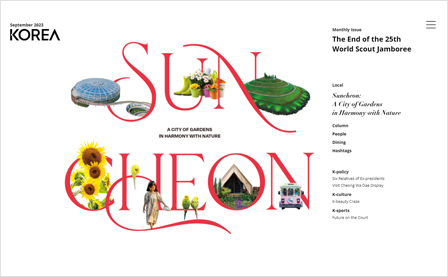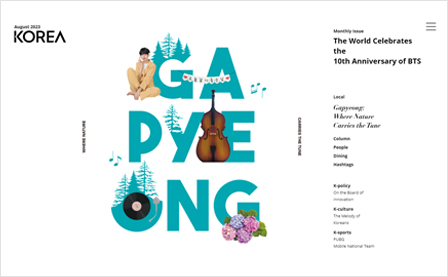December 2023

Local
Dining
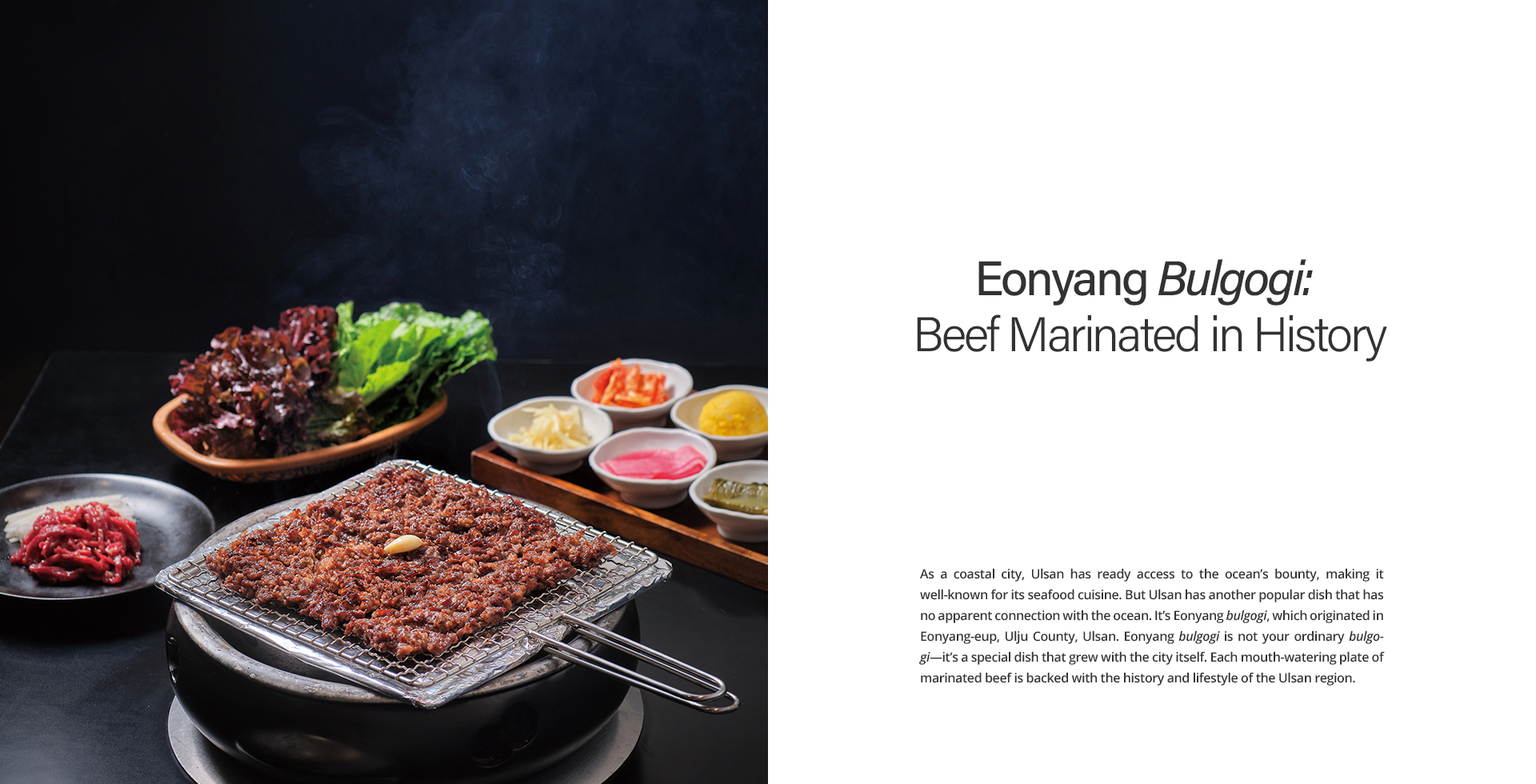
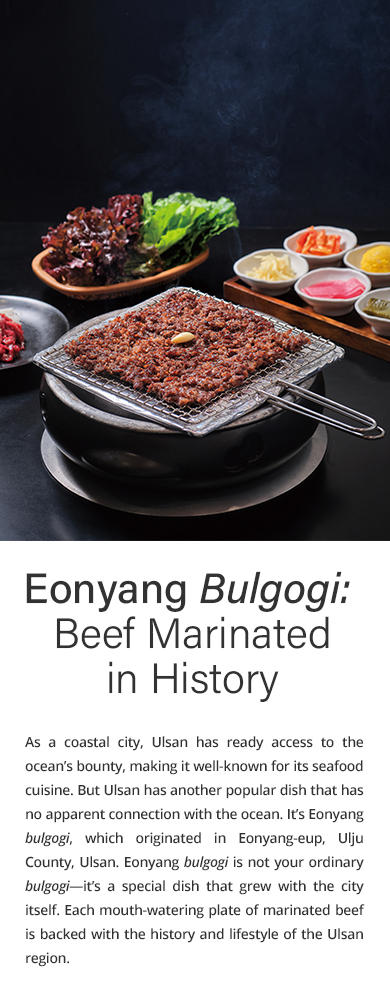
The History of Eonyang Bulgogi
Since long ago, Ulsan has produced iron and salt. Tempering iron and boiling salt water to make salt required a lot of charcoal, which was brought in from the town of Eonyang, just to the west of Ulsan. The town made good-quality charcoal from the trees lining the slopes of the surrounding Sinbulsan Mountain, Gajisan Mountain and Ganwolsan Mountain. Furthermore, Eonyang was situated near wide meadows and beside the pristine waters of the upper Taehwagang River. This was cow country, and cattle were raised at each farm in the area. A cattle market and slaughterhouse were also based here, making it easy to come by freshly butchered beef.
But beef was still dear to members of the working class. So what the Eonyang townspeople did was grill thin slices of beef marinated with soy sauce and sugar. That was how Eonyang bulgogi came to be, combining high-quality charcoal and fresh ingredients with the needs of the working class.
A dish that had been an occasional treat for Eonyang townspeople came to prominence in the 1960s. Workers flocked to the town to build a major highway and work in the amethyst mine. Thanks to those workers, word got out about Eonyang’s outstanding beef. Tourists began frequenting new restaurants in town that were serving Eonyang bulgogi as a side dish. As car ownership spread in Korea, people around the country got to try the town’s bulgogi dish for themselves. Today, Eonyang bulgogi has become Ulsan’s best-known dish, and Koreans travel great distances to sample it at places such as Ulsan’s Eonyang Bulgogi Special Zone.
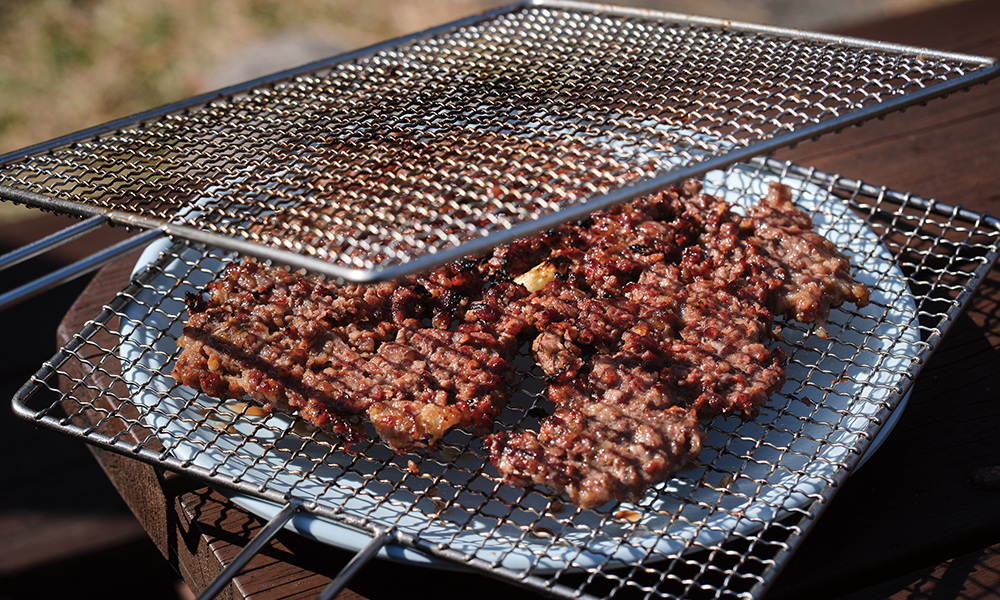
Grilled Eonyang bulgogi is moved to a plate or served up on one of the gridirons, ready for diners to start tearing off tasty morsels with their chopsticks.
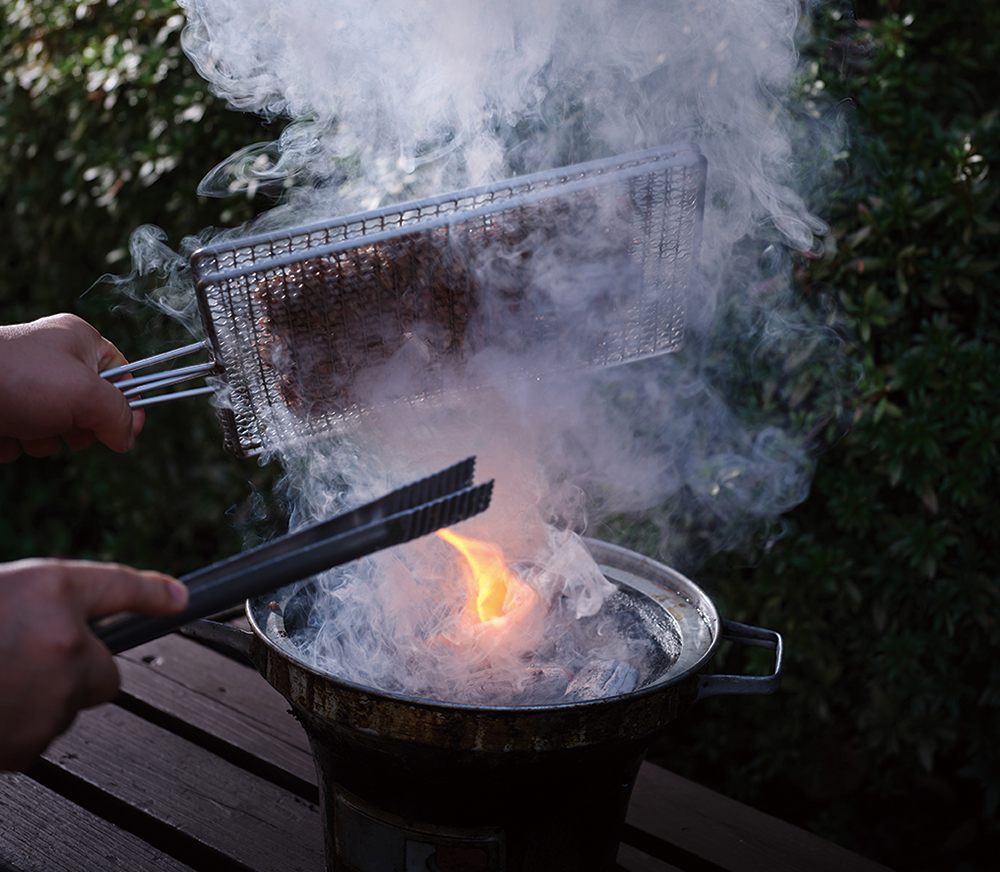
To cook Eonyang bulgogi properly, it’s important to flip the grill at the right moment to prevent one side from getting excessively charred.
Great Off the Grill
Bulgogi can be served in two basic ways: boiled in soup along with a range of ingredients, or seasoned and grilled over a charcoal flame. Eonyang bulgogi falls in the second category of grilled bulgogi. Given the lack of extra ingredients, Eonyang bulgogi’s flavor depends upon the freshness of the beef. As such, Eonyang restaurants insist on cooking beef from female cows butchered within the past 24 hours. The meat is only grilled over top-shelf charcoal called baektan, or “white charcoal.” Baektan is perfect for barbecue because it keeps the temperature at a consistent temperature, unlike other kinds of charcoal, without emitting carbon dioxide.
Good-quality beef and charcoal aren’t the only things that are crucial for Eonyang bulgogi. The other big factor is the marinade. Eonyang bulgogi is typically seasoned with soy sauce, sugar and sesame oil. The soy sauce in this dish is a particularly viscous, almost honey-like concoction boiled down with thin slices of local pears and onions. In Eonyang, they don’t lather on the marinade, though―they only add enough to complement the beef’s flavor.
Once the beef has been seasoned with this delicious marinade, it’s time to add that smoky flavor. The marinated beef is molded into a big patty that is then placed between two gridirons and slowly cooked over charcoal. The smoky aroma of the charcoal and the sweet fragrance of the marinade simmering over the flame wafts through the area, whetting appetites. When both sides of the patty are browning, it’s sometimes garnished with slices of king oyster mushrooms or garlic cloves.
Eonyang bulgogi is delicious no matter how you eat it, but be sure to start by putting a piece on a spoonful of white rice. The grains of rice and the chewy beef burst to life in your mouth. For something a little different, you may want to pair the bulgogi with a bowl of mulnaengmyeon (cold buckwheat noodles). The tartness of the chilled noodles and the sweetness of the hot bulgogi make for a perfect culinary union.
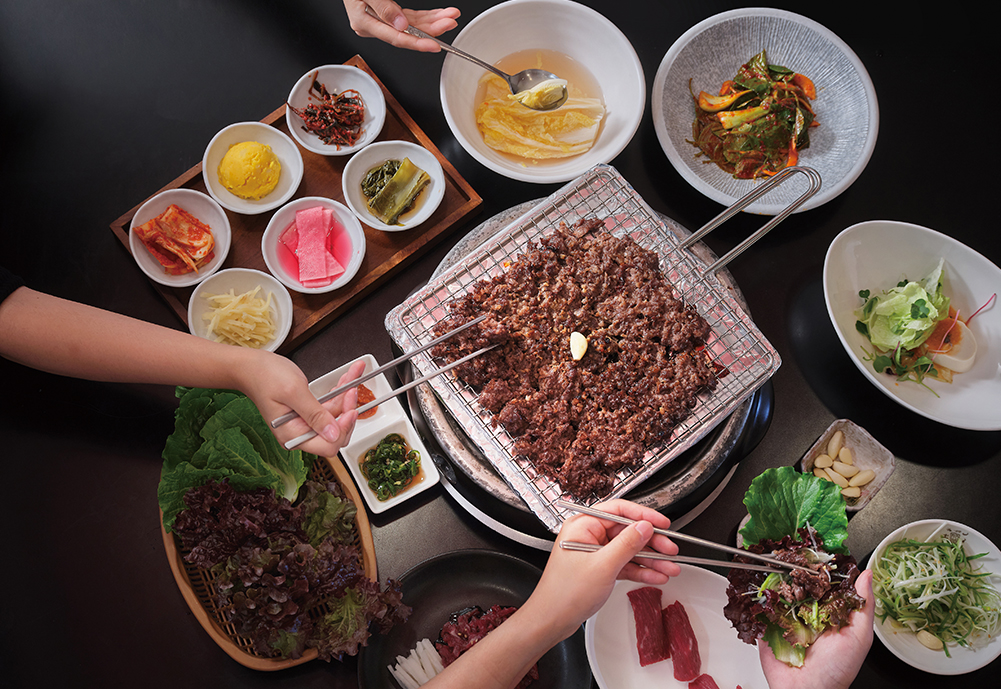
You can enjoy bulgogi as it is without sauce, with diverse side dishes, or wrapped in lettuce or greens.
 View of all
View of all

